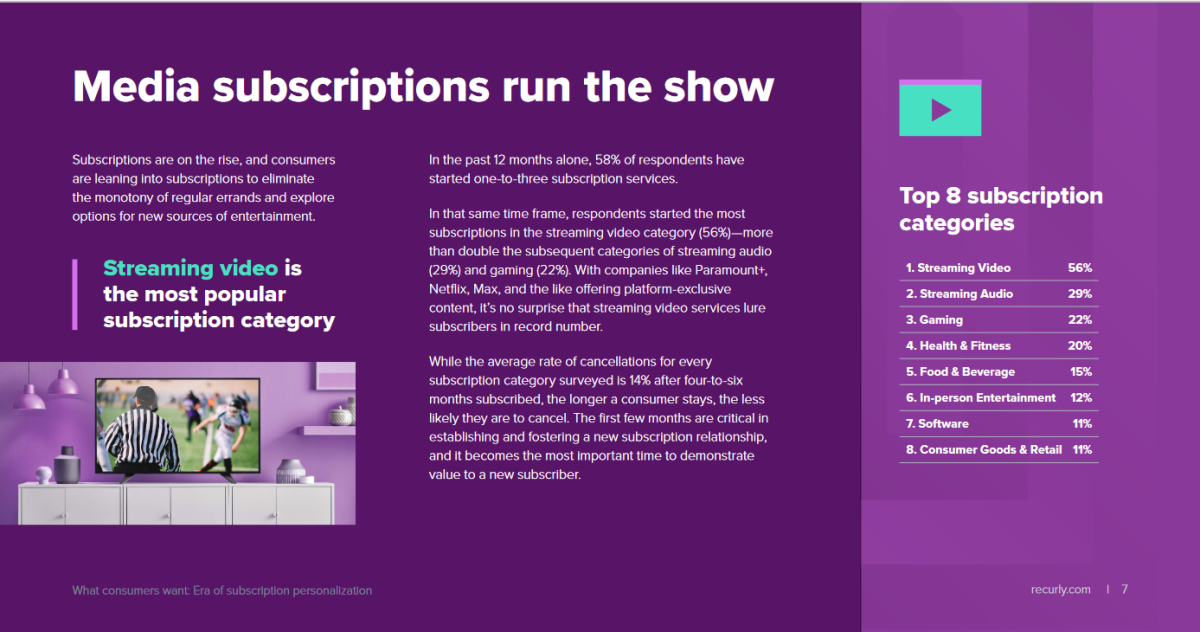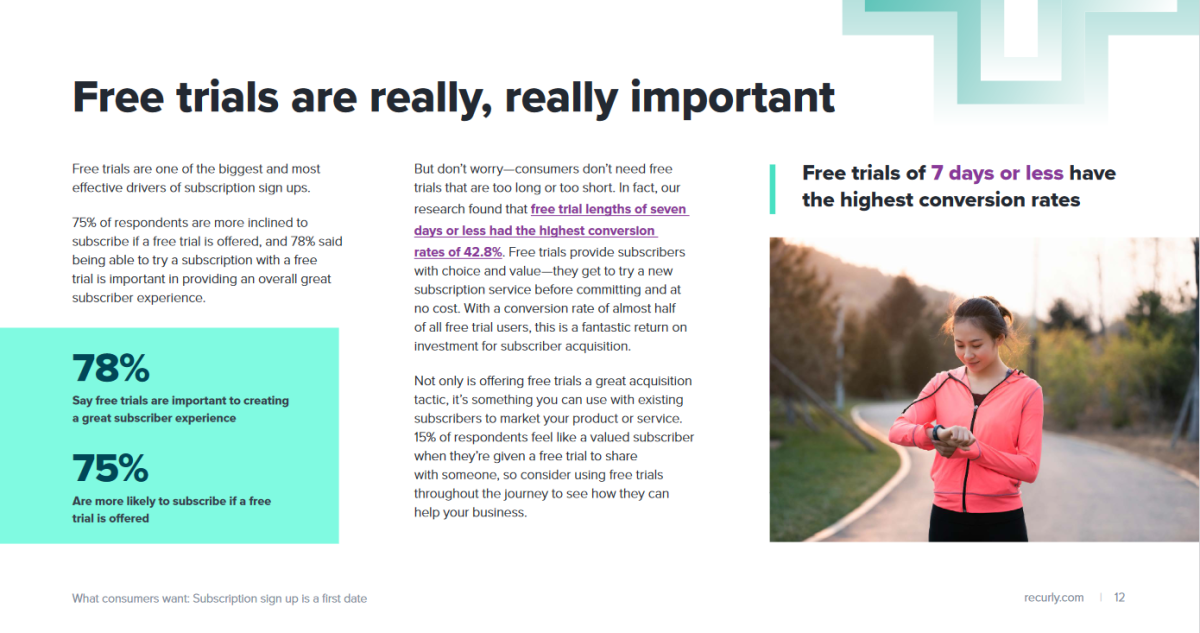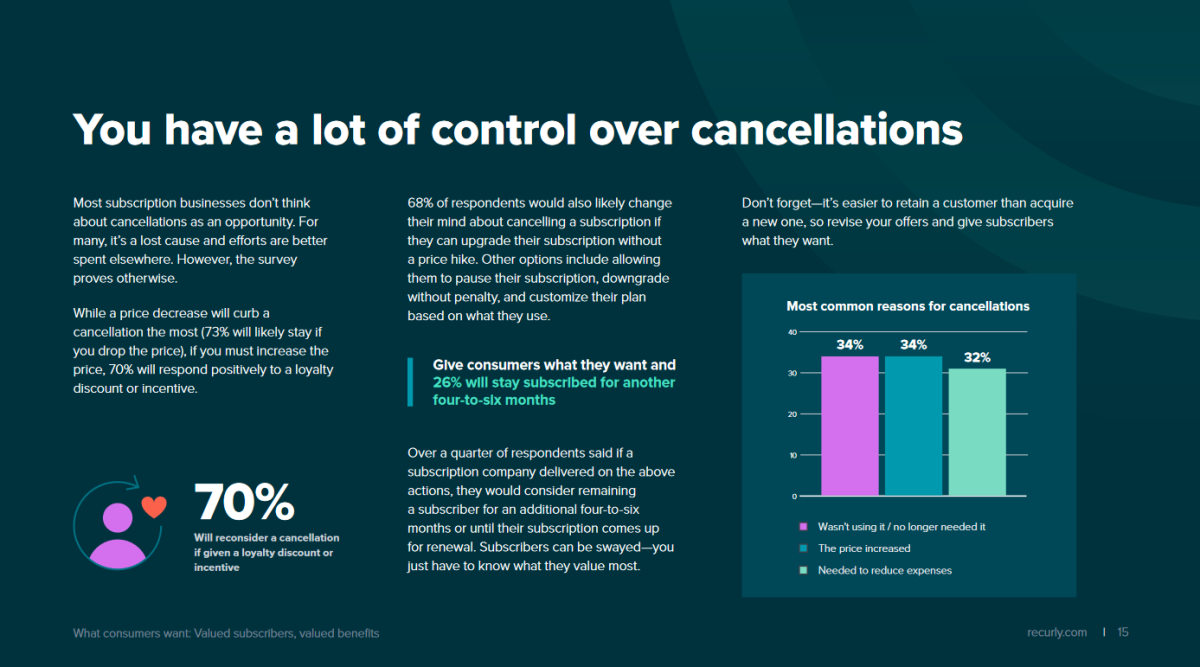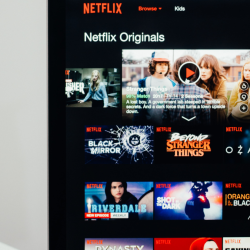Recurly, a subscription management and billing platform, recently launched its latest report, State of Subscriptions: What Consumers Want. Focusing on consumer subscription spend and trends across key markets, the report finds that 58% of respondents have started one to three subscriptions in the past 12 months alone, with streaming video subscriptions showing up as the most popular category at 56%, followed by streaming audio (29%), gaming (22%), health and fitness (20%) and food and beverage (15%).

The ability to personalise subscriptions — free trials, pause or cancel, variety of payment — is one of the top reasons for subscribing, with 65% of respondents saying they would reconsider cancelling a subscription if they can customise their plans. 77% of respondents say that they would be more likely to subscribe if it is easy to cancel the subscription, 75% if a free trial is offered and 71% if they can pause the subscription. Payment details are important for consumers as well — 61% of respondents are more likely to subscribe if they can choose their payment date and 18% feel more valued if they are offered the ability to personalise their subscriptions, whether through choosing payment types or payment dates.
We had a chat with Oscar Wall, General Manager, EMEA at Recurly, about the insights that came out of the report.
The interview has been edited for length.
Thanks, Oscar, for your time. Let’s begin by talking about the State of Subscriptions report. Can you share some of the insights that were valuable or that stood out for you?
Yeah, of course. In summary, what we saw across the board is that as there are more and more maturity, saturation and choices for consumers when it comes to subscriptions of various goods and services, they become equally more demanding in the form of especially choice and personalization. That’s a common theme throughout — that they want their subscriptions to be more feature-rich. They want to be able to do more, manage the subscriptions more in more advanced ways. It all boils down to the ability to personalise their subscription experience with merchants.
It’s quite natural and predictable if you think of it. When subscriptions were newer in a specific vertical or field there were fewer choices. You took what you got and you felt that subscriptions in itself was innovative and new. As that matures and there are more choices out there, you start to become as a consumer more picky or more demanding. That then manifests in merchants having to really think through their subscriptions more. Maybe offer a broader set of offers — choice, duration, how long their trial lengths are, which payment methods they offer… across the board allowing, if you want to call them, subscription features.
The report touched up on various different things that I thought were interesting. One of the things, the video streaming category leading the subscriptions by twice as much compared to all the other categories — it’s a bit obvious, but when we talk about market saturation, that’s probably the one with the most competition. And in the last few years, we’ve seen a lot of brands launch subscription services, especially in the video streaming category.
From what you can see, do you think the market is saturated on that category or is there still room for growth? How do you read the inclusion of ad-tier subscription models?
It’s a big question we can spend the next 20 minutes on. This is a great observation and it’s a perfect example. The question on this particular one was if a subscription had been started in the past twelve months. You could see that nearly twice as many video subscriptions had been started compared to audio subscriptions, for example. It indicates a couple of things, and some of these things we know about the space, just like you pointed out, that is a fairly mature and saturated space. Interestingly, there’s some specific characteristics with video streaming that’s different from audio streaming.
If you use that as an example, which is second on the list, it comes down to rights and access to content.
On the video streaming services, there might be some overlap between streaming services. If you compare the streaming service from a local broadcaster, a regional broadcaster, versus one of the global giants, there might be some rights overlap, but for the most part, if you want, HBO content, you need to subscribe to HBO. If you want Disney content, you need to subscribe to Disney and so on. There is some overlap because of rights management and rights distribution, but largely if you want all the content, you have to have all the services. This creates behaviour too.
That you might not be interested in all the HBO content or all the Disney content, but you’re interested in some. You sign up and consume that and then you move on. It’s much more of a dip in, dip out behaviour.

When you look at audio streaming, instead, the overlap between services is far greater because that’s how books and rights are managed. There is a degree of exclusivity on certain services in the form of rights, bespoke content or exclusive content that’s been created for the platform itself, but it’s largely safer to say that if you have one audiobook subscription service, you have access to most of the books. If you have one audio music streaming service, you have access to most of the music. But you can look at something like SoundCloud and Spotify, for example — there’s very little overlap between those platforms because one is signed artists and the other one is indie artists. And there you can see that consumers have both.
That’s quite interesting — that saturation in the space can actually manifest very differently in subscriber behaviour.
If you try to draw a parallel to a physical goods subscription — you wouldn’t subscribe to the same sort of grocery service and get two sets of milk and two sets of butter. You pick one and go with that one. But it can still be saturated in the form of how many actors are in there, how much choice the consumer has. I think that’s an important distinction and an important observation — that it’s not apples to apples across the board when you analyse.
You asked do I think there’s room to grow still — I think absolutely, because I don’t think we’re in the final state of how subscribers consume these services. Right now we’re still talking about an all-you-can-eat model primarily. You pay one monthly fee and access pretty much all the content.
There are some exceptions when it comes to sports rights but if you think more about films and series and so on, it’s an all-you-can-eat, which Netflix introduced and has served this space really well. What I think will happen is that the merchants or the OTT services will have to be more innovative about their offers. You saw the ad-tier. That’s one approach to lowering the price point and still getting share of wallet, while still not getting as much as before from the subscribers’ wallet directly. But it’s still an all-you-can-eat model. What you’re seeing, in a saturated market, even though rights [are] different on the platforms and overlap not great, there’s only so much time in the day.
Most people can’t watch all the content.
Kind of like going to a buffet — you loved it when it was just one buffet in town. You went, you ate everything until you were full and you felt a good value for the money. Now you’re paying full price for the buffet, but you’re just nibbling a little bit here and then you’re going across the street and doing the same there. You don’t feel like you get value for your money. I think what we will see over time is that you can basically pay less for less, meaning a lower price, but maybe a certain category of content, let’s say fantasy content on this platform, comedy content on that platform.
There’s a million ways that these brands can slice and dice this, but they do need technology to help them do that effectively.
I think that’s an interesting approach, but it sounds very frustrating for the consumers. You talk a lot about convenience in the report — and to go back to your buffet analogy, it’s like you pay for these buffets, but not everything that you want to eat are on there. So you have to pay a little bit to eat here and then a little bit to eat there. And the streaming model of doing things has changed a lot in the creative industries, especially when you look at film and cinema. There’s a writer strike going on, creatives are not getting paid like they were before. It’s becoming increasingly difficult for writers to make a living because of the way that the streaming platforms distribute income.
That’s on the supply side and on the demand side, consumers just want to watch whatever show but don’t want to have to pay ten pounds for this service and then ten pounds for that service. So what do you think that kind of fragmentation is going to look like in a couple of years?
Yeah, I think your observation is spot on. This will always be driven by supply and demand. When you factor in the creators or the riders into the spectrum, you find an industry that will have to iterate through how things are going to work in a new normal. It’s not surprising that you’ve seen it in other industries, and I think that may be the parallel you can draw. A decade ago or so it happened in the music industry. Obviously that was driven by piracy and all of those problems, but in the end it ended up being the Spotify model, if you will, and the industry has adjusted to that. That’s now more the norm. I’m not an expert enough to say that ended up being good for everyone or fair for everyone, or as good as before for everyone. It’s likely shifted but it’s a new construct. And that’s been aligned with demand.
The model for compensating musicians is at the core of the whole thing.
So similarly, I think it’s the creators that will start or be part of the shift, and the consumers ultimately will be part of it. And then our customers will have to listen to both and find models that work on both the source supply and demand side. It’s likely going to change. To exactly what I don’t know, but it will likely put new types of demand or pressure on the OTT streaming services in being able to cater to both the creators to get content on their platforms and to consumers to have an attractive enough offer to do so.
This can come in the form of being able to much more acutely analyse content consumption, attribute it to payouts. They will likely then want to do cost modelling around that. Is this content worthwhile procuring, whether it’s creating it or buying the rights for it? Is it being consumed?
I think you’ll have a much faster feedback loop and a much more agile industry as a whole. You’re seeing it already with how quickly or not originals are discontinued.
Going back to the report, you give a basic formula for subscription retention: free trials, option to pause subscriptions and easy cancellations. It sounds very simple and consumer friendly. How well do you think this resonates with brands?
I think it ties into what we spoke — that you have to be much more agile and have more options for the subscribers. What we found here is that it’s not all about ‘offer the service at a lower price.‘ That’s probably not sustainable. These are all mechanisms, like you said, sounds easy, makes sense for the consumer, but how does it affect revenue and retention numbers? And that’s where I think you have to be much more deliberate and agile around testing what works. Running the numbers, seeing the results and so on, to make sure that it’s sustainable for the merchant. Because ultimately it’s a very competitive space now.
Let’s call pausing subscription a feature.
If you don’t have technically the ability to do that, but your competitors do, you might be at a real disadvantage come summertime when people start thinking about reducing their subscriptions because they’re going to be outside on the beach. They might cancel your subscription while they’re pausing your competitors’. That’s a huge risk.
Same thing on the acquisition — if your competitors are offering not just different options or the perfect optimised trial window, but also offer maybe the ability for ramp pricing. I pay more during my first three months and then I go into a lower tier of paying for the next nine months. So I’m comfortable committing for twelve, knowing that I’ll pay more in the beginning where I likely watch more of my favourite shows and then go into a little bit more of a slower cycle. Being able to lock someone up for twelve months is super valuable in this fragmented space. But can you do it smartly?
Instead of this very simple ‘I’m going to offer a trial, I’m going to offer the option to pass and cancel.‘ I think you have to really think through and have all those features available to you to mix and match.


You talked about competition and it’s not like the brands are only competing within their own categories. They’re also competing between categories in a way. Especially now when there’s a cost of living crisis going on, how do you see the reflections of that in the report?
I think a lot of the categories that we surveyed are now higher when it comes to a hesitation to sign up, share more of your wallet or propensity to cancel. People are now cancelling not because they know that they shouldn’t spend money on things, they have to cancel. We’re seeing it in the figures across the board. I don’t have the exact comp because we haven’t run the exact same survey before, but I would imagine that there is a kind of ‘cost of living tax’ applied to a lot of these figures.
What I think is interesting is that depending on how you ask the questions, you still see this macro shift to subscriptions because subscriptions in a cost of living crisis is a very friendly way to split up payments. If you think about, if you don’t have a lot of discretionary income — let’s use street media as an example. No one does this anyway anymore, but let’s say that you had to buy a boxset of DVDs. That’s a one-time, big payment. If you don’t have the cash in the past, you could maybe take a small loan or put it on your credit card and pay it off over time, paying interest.
But subscription, you actually get access to it straight away and you pay for it in monthly instalments, but there’s no concept of interest. There’s no one-time big expense. So subscriptions in general are actually a very friendly way in the cost of living crisis.
The trick is, and you’re still seeing this shift over to subscriptions, not solely because of that, but because subscriptions are obviously still an up and coming means to procure goods and services. Whereas if you look at it more on a micro level, comparing month to month, you’re seeing maybe a slowdown that’s impacted by the cost of living crisis. But if you look at it or over longer time periods, you’re still seeing this robust shift to subscriptions.
And finally, what’s on Recurly’s agenda for the rest of the year?
We’re focused on providing more ability to our merchants or even more that’s already in the platform in the form of analysing. First and foremost, this. These behaviours are more around cohort analysis and using cohorts that are external to Recurly itself. So let’s say if you have content consumption based cohorts that you can construct in your dataset outside of Recurly, that you can still leverage those in Recurly to offer up. And this was actually something I meant to answer before when you asked about trials, discount coupons, those things that you said were simple and makes sense for the consumer.
These more feature-rich or niche subscriptions, you don’t necessarily have to offer them all to new subscribers on your rate card. That can be very confusing. But you can offer it to existing subscribers.
Let’s say I’m only watching football content and the season is about to end. If you can get out in front of that and not wait until I click pause or cancel, but rather offer me something proactively saying, ‘why don’t you slow down your spend over summer since the football season is over, and we’ll pick it up again in August or September.‘ In order to do that, you have to have the ability to analyse data, create cohorts and then act on cohorts. That’s a big part of our roadmap. We’re building the ability to act on those more proactively.
Offer subscriptions or plans that are not on your public rate card, that feel much more bespoke and personalised.
We’re also very much focused on internationalisation — the ability to help brands launch globally and go from their home market to other regions and markets across the globe. That manifests in a number of different ways: the partners that we work with, gateways and payment methods, tax partners, fraud partners, as well as functionality in the core platform as well to support multiple entities, currencies and country combinations.
Wonderful, thank you so much.
Featured image: Oscar Vargas / Unsplash































